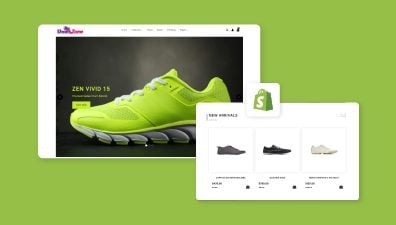Mastering sale is a complex task. In fact, achieving sales and revenue targets is one of the biggest obstacles that small businesses and even big corporates face. This is where astounding marketing campaigns come into play. Regardless of how outstanding your online store is or how revolutionary your products may be, with adequate marketing, your business will remain visible to potential customers. The good news is that Shopify store marketing strategy can be straightforward. There are numerous strategies available to help you attract more customers and increase sales.
Additionally, there are several fantastic apps and tools to assist you in implementing an outstanding Shopify store marketing plan. In this article, we will guide you from zero to running a successful Shopify business. We will help you in selecting the best tools and strategies to meet your needs (and budget) and demonstrate how other companies have thrived along the way.
Table of Contents
What Is Shopify Marketing?
Shopify marketing refers to the various tactics and strategies that businesses use to promote their online store on the Shopify platform. The goal of Shopify marketing is to increase visibility, enhance brand awareness, drive traffic, generate sales, and build customer relationships through a variety of channels, such as social media, email marketing, content marketing, paid advertisement, and more.

Effective Shopify store marketing strategy requires a deep understanding of the target audience, a clear value proposition, and a well-designed website that provides a seamless user experience. With the right tools, resources, and expertise, businesses can leverage Shopify marketing to achieve their sales and revenue goals, build brand awareness, and establish a loyal customer base.
Why You Need A Well-Planned Shopify Store Marketing Strategy In 2023?
As you know, having a map is crucial to avoid getting lost. Similarly, having a well-planned Shopify store marketing strategy is essential to know whether you’re on track to reach your sales goals and determine the effectiveness of your sales techniques. With a good marketing strategy, you can estimate your business’s reach and sales potential, and set measurable goals to monitor your progress. As the well-known saying goes “what can’t be measured, can’t be managed”.
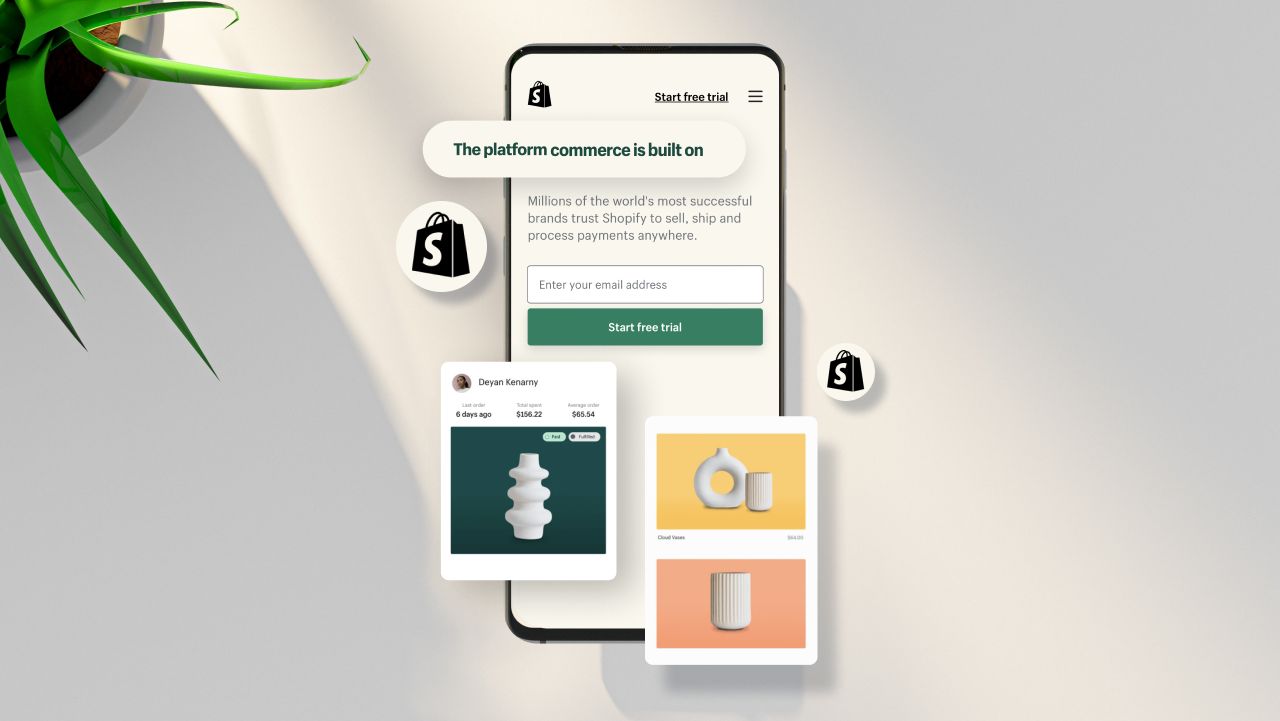
Shopify is widely regarded as one of the best eCommerce platforms for creating an online store. Its top position in the market is due to a variety of factors, such as its elegant design, user-friendliness, customizable products, search engine optimization capabilities, top-notch inventory management, and compatibility with popular payment platforms. With Shopify’s exceptional features, you can quickly set up your online store, boost your online sales, and expand your business. However, to succeed in the market, you must have a well-defined Shopify store marketing strategy in place.
Here are some reasons why a well-planned Shopify store marketing strategy is essential in 2023:
- Increased competition: With the rise of eCommerce, the competition is getting tougher day by day. To stand out from the crowd, you need to have a unique value proposition and a Shopify store marketing strategy that reaches your target audience.
- Changing consumer behavior: Customers are becoming more and more strict, and they expect a seamless experience. A great marketing strategy can help you meet the changing demands of your customers and create a positive shopping experience.
- Customer retention: Acquiring new customers is important, but retaining them is even more crucial. Marketing can help you build a loyal customer base by creating engaging content, personalized offers, and exceptional customer service.
- Data-driven decision-making: With the vast amount of data available, it’s important to have a Shopify store marketing strategy that leverages this data to make informed decisions. By analyzing customer behavior and engagement metrics, you can optimize your marketing efforts and maximize your ROI.
Best Shopify Store Marketing Strategy To Skyrocket Your Sales For 2023
Merely building a Shopify store is not enough to guarantee success. In order to truly thrive, meticulous planning and a customer-driven marketing approach are crucial. By implementing these effective Shopify store marketing strategies and tips, you can increase the visibility of your products and services in the market, ultimately driving your ROI.
Site Optimization
Concentrating On Shopify-centered Site Optimization Practices
This is a practice that can be implemented from the Shopify website development step. It’s crucial for a store owner to have his site optimized. This Shopify store marketing strategy will naturally ensure that customers can easily browse products and categories without any glitches and make purchases without confusion. Here are some things you can do to ensure your site provides a great customer experience.
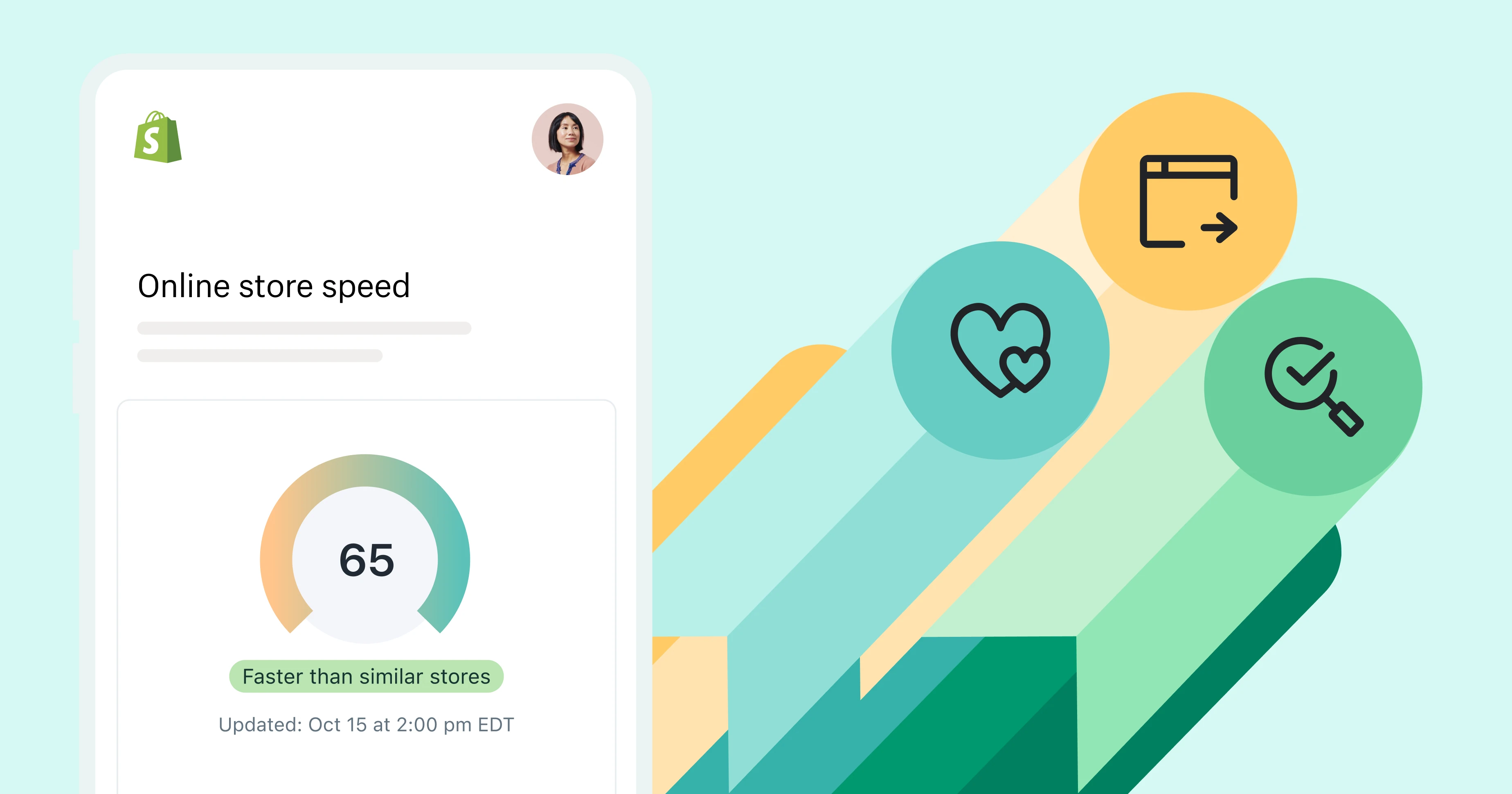
The very first problem to consider is page speed. Slow loading times can lead to a high bounce rate and decreased conversions. To improve your page speed, you can compress images, use a content delivery network (CDN), and choose an up-to-date theme that is fast loading and responsive across multiple devices.
Another critical aspect of Shopify site optimization is user experience. A well-designed and intuitive user interface can help keep visitors on your site longer and increase their likelihood of making a purchase. This can be achieved by using clear and concise language, opting for a system font, easy-to-navigate menus, and prominent calls-to-action. You also have to eliminate unnecessary redirects and pay special attention to redirect loops that disrupt the customer experience.
Additionally, optimizing your Shopify site for search engines is crucial for driving organic traffic and increasing visibility. This Shopify store marketing strategy can be done by optimizing meta titles and descriptions, creating quality content that incorporates relevant keywords, and building high-quality backlinks. We talk about this point in more detail later.
Regularly update and maintain your site, as outdated or broken links and code can negatively impact your site’s performance. By conducting regular audits and staying up-to-date with the latest Shopify updates and best practices, you can ensure your site is always running at its best.
Create Large CTAs For Mobile Devices
The Shopify store marketing strategy here is not only to make your audiences take actions as you wish, but also to make it easier to do for them. Therefore, by making your CTAs easy to spot and click on, you can increase the likelihood that users will take the desired action, whether it’s adding an item to their cart or subscribing to your newsletter. However, it’s important to strike a balance between visibility and intrusiveness.

Consider using contrasting colors and clear, concise language for your CTAs. Also, make sure they are properly sized for mobile devices and placed in a prominent location on your page. With these tatics, you can improve the mobile UX and drive more sales on your Shopify site.
Keep The Content Easily Skimmable
When optimizing your Shopify site, it’s important to keep your content easily skimmable, especially for mobile users. When they read on mobile devices, the screen is truly limited and they usually focus on the length of the content. If it’s too long, there’s a high possibility that they will live in just 2 to 3 scrolls. So the Shopify store marketing strategy here is that avoid forcing them to scroll multiple times to get through all the content. So how can you do this?
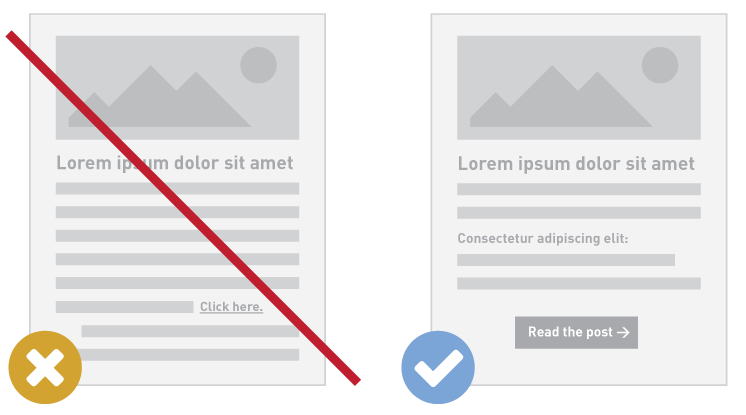
Breaking up your content into smaller, digestible chunks with clear headings, bullet points, and images is the best practice. By doing this Shopify store marketing strategy, visitors to your site can quickly scan through your content and find the information they need without feeling overwhelmed. Additionally, using short paragraphs and keeping your language simple and concise can also help improve readability and user experience.
Make Your Site SEO-friendly
As we mentioned above, making your website meet all the best SEO practices from Google or other search engines is crucial to improve your Shopify site’s visibility on search engines and driving organic traffic. In recent statistics, 48% of shopping journey starts from search engine results. This means your store needs to appear at the right place, meet the right kind of searches, and at the right time.

Here are some tips to implement this Shopify store marketing strategy:
- Conduct keyword research: Research and choose relevant keywords for your business and optimize your site content with them. You can prioritize top-of-the-funnel keywords with higher search volumes. However, don’t forget to include long-tail keywords that indicate high purchase intent and are commonly used by shoppers.
- Optimize product titles and descriptions: Use relevant keywords in your product titles and descriptions to make them easily discoverable by search engines.
- Use meta tags: Include meta titles and descriptions for your site and each page that accurately describes the content and includes relevant keywords.
- Build backlinks: Build high-quality backlinks from reputable websites to increase your site’s authority and improve search engine rankings.
- Optimize images: Optimize your images by compressing them, using descriptive file names and alt text, and adding relevant captions.
- Improve page load speed: A fast-loading site improves user experience and search engine rankings. Use tools like Google PageSpeed Insights to identify and fix issues that slow down your site.
Add Customer Reviews To Product Pages
Customer reviews play a crucial role in influencing purchase decisions. In the absence of reviews, customers may find it difficult to trust your brand. Therefore, it is important to prominently display reviews on your product pages as they serve as a strong trust signal and contribute to social proof.
Research shows that positive reviews can increase the likelihood of shoppers supporting a business by 94%. Even negative reviews can provide valuable insights to customers and contribute to building trust. Conversely, a lack of reviews can raise doubts about the authenticity of the product.
Thus, including customer reviews on product pages is an effective Shopify store marketing strategy to increase credibility and trust in your brand. By showcasing authentic and unbiased opinions from previous customers, potential buyers are more likely to make a purchase.
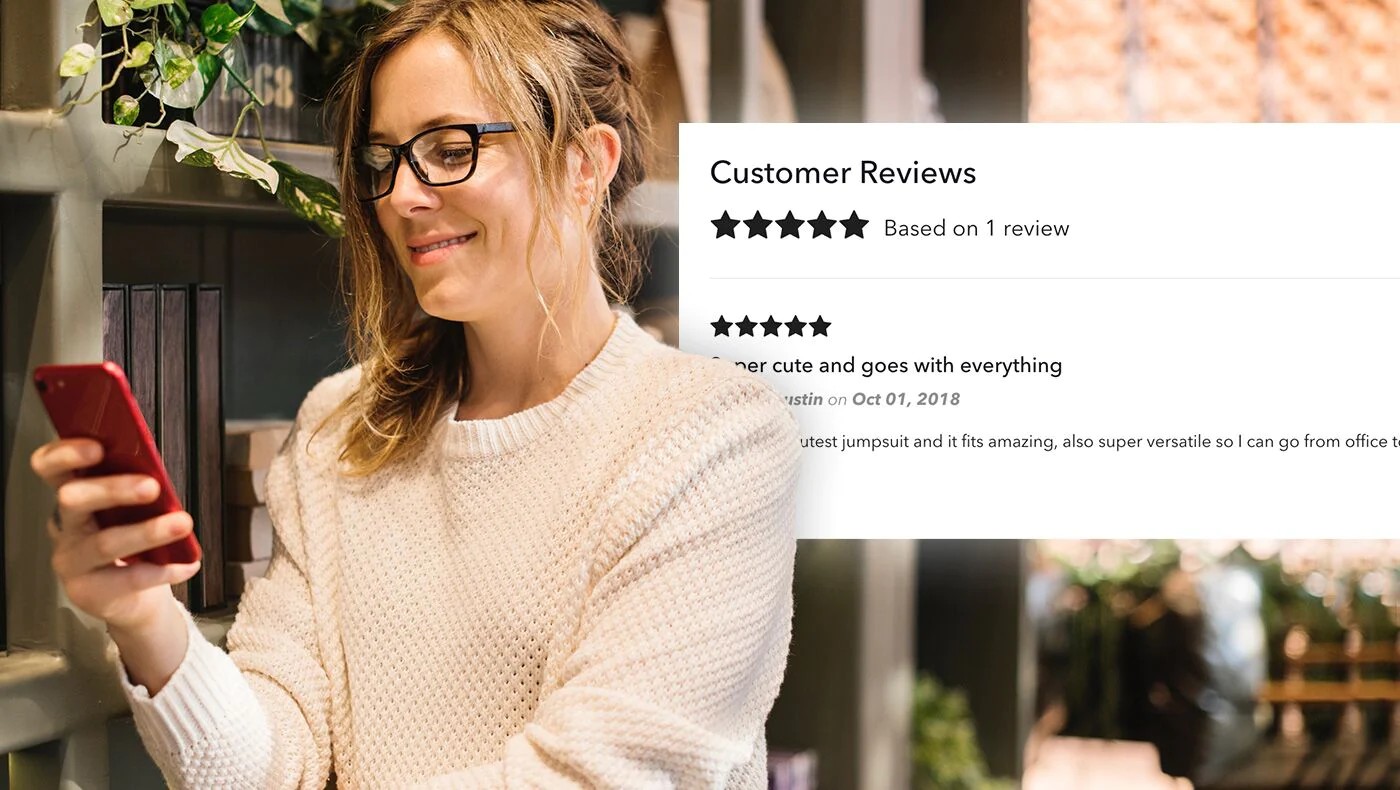
To add customer reviews to your Shopify store, you need to use review apps from the Shopify app store. These apps allow customers to leave reviews directly on your website and provide options for displaying reviews, such as star ratings or written testimonials. Additionally, you can also use schema markup to display your overall rating and review count in search engine results, which can further enhance your SEO efforts.
After setting up a system for customer reviews, use your communication channels to prompt customers to leave feedback. Consider sending a text message or email after the product has been shipped, inviting the customer to share their honest review. You may also consider offering incentives, such as a discount or giveaway, to encourage more customers to leave reviews for your store.
Automation
Implementing Abandoned Cart Recovery Campaigns
Abandoned cart recovery campaigns aim to win back shoppers who added products to their cart but didn’t complete the purchase. These potential customers have already shown an interest in your business, making it easier and more cost-effective to convert them into buyers than to attract new customers.
To entice these lost shoppers to return and complete their purchases, store owners can implement this Shopify store marketing strategy of sending out targeted reminders, such as offering a discount code. This strategy can be highly effective in motivating customers to take action and complete their purchases.

These campaigns can be sent out via email or SMS, reminding customers of the items they left behind and encouraging them to complete their purchases. This Shopify store marketing strategy can also be done through social media platforms such as Facebook Messenger or push notifications apps. You can offer incentives such as discounts or free shipping to entice them to return and complete the purchase.
Integrate Your Social Media Channels With Shopify
Integrating your social media channels with Shopify can have a significant impact on your online store’s visibility and reach. With this integration, you can easily share your products on social media platforms, making it easier for your followers to find and purchase them.
By linking your social media accounts to your Shopify store, you can also leverage the power of social media advertising. This Shopify store marketing strategy means that you can create targeted ad campaigns that reach your ideal customers and direct them to your online store.
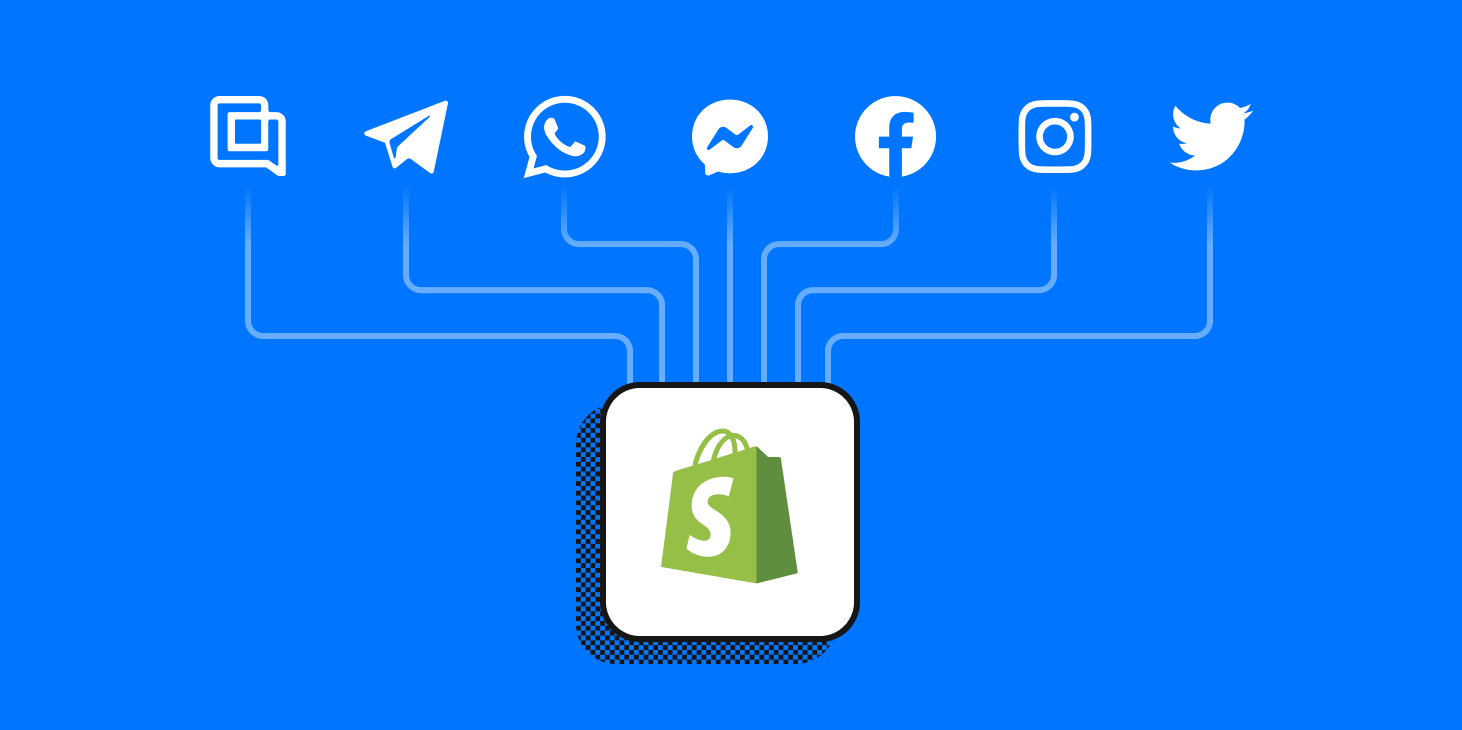
Moreover, you can use social media to engage with your customers, build relationships, and generate brand loyalty. You can share user-generated content, respond to customer inquiries, and run social media promotions to incentivize followers to make a purchase. This can make an impact as strong as the 5-star review on your site.
In short, this Shopify store marketing strategy of integrating your social media channels with Shopify can help you increase your online store’s visibility, attract more customers, and enhance customer engagement.
Integrate The Live Chat And Chatbot Option For Customer Experience
According to research, customer satisfaction levels hover around 61% for phone calls and 44% for email, but using live chat can boost this number up to 73%. Response time is a crucial factor in providing excellent service, with both speeds of response (89%) and speed of resolution (89%) considered the most important aspects of the customer service experience across all channels. Thus, integrating live chat and chatbot functions can help enhance your Shopify store marketing strategy and deliver a more comprehensive customer experience.
Adding a live chat function can allow customers to easily ask questions and receive real-time support, leading to higher customer satisfaction and sales. You can also use the data collected from live chats to improve your products and services, as well as to identify common pain points and areas of improvement for your business. This can help you make data-driven decisions that improve the overall customer experience and increase sales.
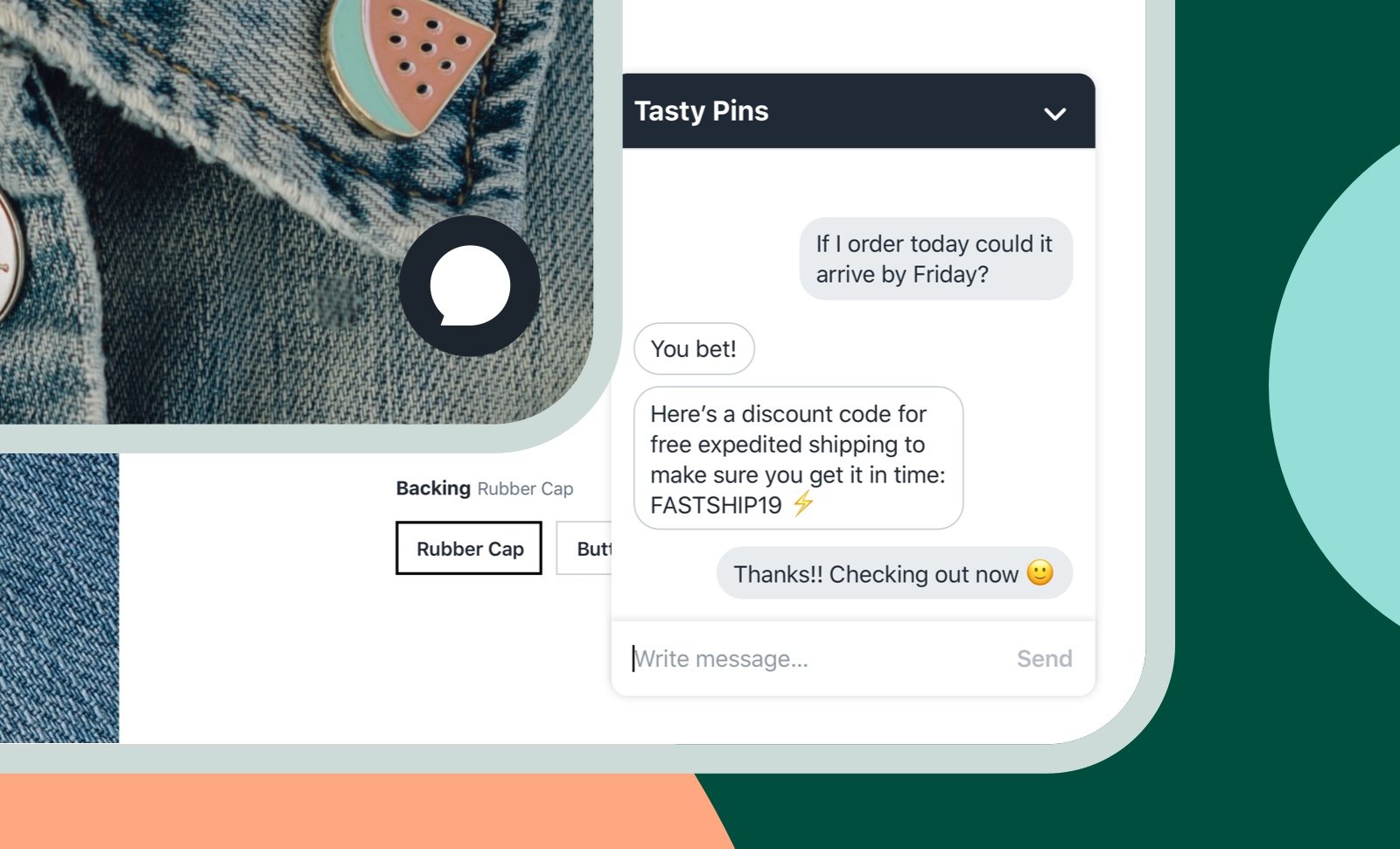
Integrating a chatbot option on your Shopify store can enhance the customer experience and provide 24/7 support to shoppers. Chatbots can quickly answer common questions, offer personalized product recommendations, and even help with the checkout process. By automating these tasks, you can free up your customer support team to handle more complex inquiries and build stronger relationships with your customers. Additionally, chatbots can collect valuable data on customer behavior and preferences, which can be used to improve your marketing and sales strategies.
Automate Your Shopify Store Marketing Strategy
Automating your Shopify store marketing strategy can save you time and effort while improving your sales and customer engagement. With automation, you can set up targeted email campaigns, social media posts, and even abandoned cart recovery campaigns that run automatically based on specific triggers and customer behavior.
- Social media promotions: Shopify store owners can easily integrate their store with social media sites and share products on these platforms with just a single click. With Shopify apps, you can also set up Facebook, TikTok, and Instagram shops, and automatically update your inventory on these shops to make your products available for selling.
- Customer engagement: Keep your customers engaged and interested in your business with regular automated updates through various channels like email communication, automated retargeting and remarketing campaigns, and web push. Shopify apps can help you send out automated product updates, welcome emails, and more.
- Internal communication and program management: To keep track of your Shopify store and inventory, you can integrate it with apps like Slack, Trello, Google Sheets, Airtable, and more. This allows you to manage cross-functional projects, sales, customer relations, marketing activities, and other internal communications efficiently.
- Email Marketing: Using tools like Klaviyo, or Mailchimp, you can set up personalized emails that are triggered by actions like a customer signing up for your newsletter or making a purchase.

By automating your marketing strategies, you can also take advantage of data and analytics to better understand your customers and optimize your campaigns for higher conversion rates. This can help you build a loyal customer base and drive more revenue for your business.
Social Media
Sell Your Products On Social Media
Selling your products on social media can be a great Shopify store marketing strategy to reach a wider audience and increase sales. Shopify stores have the ability to expand their sales beyond their website. One of the most advantageous aspects of Shopify is the ability to connect your Shopify store with several social media platforms, allowing you to sell your products directly from these platforms. This is referred to as social commerce, and it simplifies the customer experience, enabling customers to discover and purchase products without having to leave the social media app. Here are some of the ways you can sell your products on social media platforms.
- Tiktok
Shopify has partnered with TikTok, the latest social commerce platform, to introduce organic product discovery and shopping tabs. This means that the only way to sell on TikTok is through a Shopify account. With its rapidly growing user base and emphasis on short-form video content, TikTok has become a popular platform for businesses to reach younger audiences and showcase their products. This has made Tiktok one of the best social media you should include in your Shopify store marketing strategy.

To sell your Shopify products on TikTok, start by creating a TikTok account for your brand and building a following by posting engaging and relevant content. You can also consider partnering with popular TikTok influencers to promote your products to their followers.
Next, use TikTok’s advertising features to create targeted ads that showcase your products and drive traffic to your Shopify store. You can also use hashtags and challenges to increase visibility and engagement with your brand. Make sure to optimize your Shopify store for mobile users, as TikTok’s user base primarily accesses the platform through their mobile devices.
Facebook is considered the leading social commerce platform due to its user-friendly Facebook Shops tool. Business profiles can set up a Facebook Shop for free, which is connected to their Shopify product range. The setup can be done automatically through their eCommerce platform, or by uploading a spreadsheet.
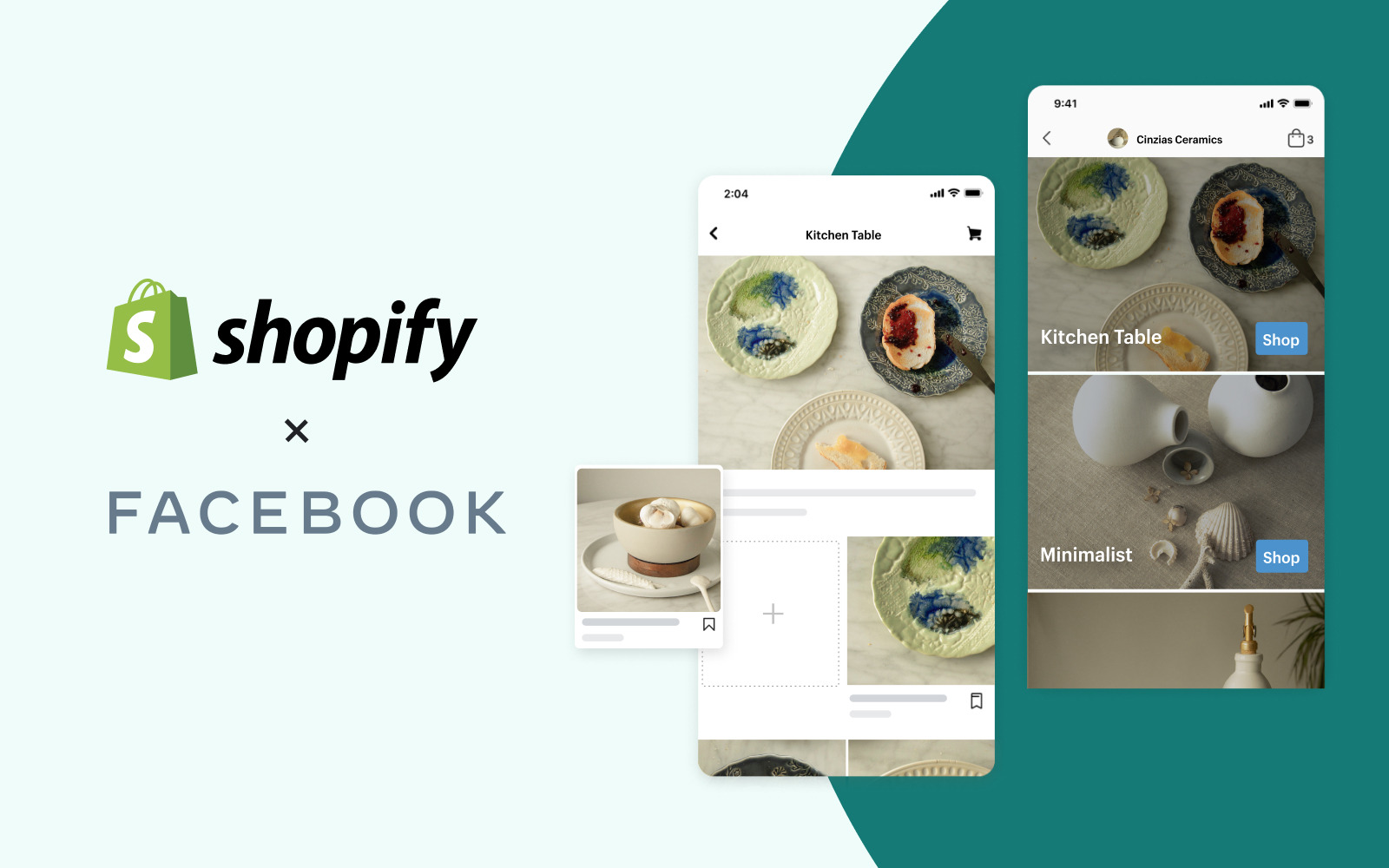
With Facebook’s social commerce solution, buyers and sellers can easily communicate through Messenger, making it an excellent way for brands to connect and engage with their audience. Facebook is also a great platform for shoppers to discover products that match their interests organically. The mobile app works well for organic discovery, allowing users to complete their transactions from discovery to purchase all within the same app.
Instagram Shopping offers eCommerce store owners a way to directly sell products on the platform. To set up your Instagram Shop, you’ll need a business/creator account and an online store. Once your shop is live, customers can browse and purchase products without leaving Instagram. You can customize your shop with different themes, collections, and products, such as bestsellers, seasonal trends, and new arrivals.

Customers can be directed to your Shopify website or they can use Instagram Checkout to purchase products directly. Instagram Checkout incurs a small fee. Setting up an Instagram Shop is free. Product pages on your Instagram Shop are similar to those on your online store, including product descriptions, prices, and information.
Pinterest has emerged as a popular platform for online sales, although it is not strictly a social commerce platform as transactions cannot be completed directly on pins. Instead, users are redirected to a landing page that displays the product and allows them to complete their purchase. Despite this, 89% of Pinterest users use the platform to find inspiration for their purchases.

Shoppable Pins are used for social commerce on Pinterest. These pins are linked directly to your eCommerce products, allowing users to tap on the product image and be directed to a product purchase page. Pinterest’s visual appeal makes it an excellent place for brands to showcase their products and attract potential customers. Additionally, Pinterest has a link to Etsy, which can help boost sales for Etsy stores through the platform.
Create Engaging Social Media Posts
If you want to have an effective social media marketing strategy, it’s not enough to simply promote your products. You need to create content that engages your audience and establishes a connection with them. There are various practices that you can take for social media marketing:
- Use high-quality visuals: Your images or videos should be high-resolution and visually appealing to grab the attention of your audience.
- Keep it short and sweet: Keep your message concise and easy to understand. People tend to scroll quickly, so make sure your post can be absorbed in a few seconds.
- Use a conversational tone: Write your captions in a conversational tone that aligns with your brand voice. This helps to build a connection with your audience.
- Include a call-to-action: Encourage your audience to engage with your post by including a call-to-action, such as asking a question or prompting them to share their thoughts.
- Use hashtags: Including relevant hashtags in your posts can increase visibility and help your content get discovered by people who are interested in your niche.
- Experiment with different formats: Mix it up by creating different types of posts such as images, videos, carousels, or even stories to keep your content fresh and engaging.
- Post consistently: Consistency is key when it comes to building engagement on social media. Develop a schedule and stick to it to build a strong presence and keep your audience engaged.

Expanding your Shopify store marketing strategy requires creating diverse content on social media. Showcase your products in unique ways and encourage user-generated content to engage with your audience. By leveraging social media effectively, you can attract a large number of new customers to your store.
Run A Social Media Giveaway
Product giveaways can be a highly effective strategy for eCommerce businesses on social media. Giveaways can generate buzz around your brand, increase product and brand awareness, and drive traffic to your store.
In addition, giveaways can go viral and generate valuable user-generated content, as seen in popular TikTok hashtag challenges.

Since everyone who enters your giveaway is interested in your products, they are easy targets for marketing. After the giveaway, consider sending a discount code to all entrants to keep your products top of mind and encourage them to make a purchase.
Remember to always comply with the rules and guidelines of the social media platform you’re using for the giveaway, and to clearly state the terms and conditions of the giveaway to avoid any confusion or misunderstandings.
Get Involved In Community Marketing
Community marketing is a powerful way to promote your eCommerce business. It’s totally different from social media. Instead of creating your own social group and community around your brand, you will join an existing online community such as local, charity communities, or online forums. By getting involved in local events or supporting a charity, you can connect with potential customers and build brand loyalty.

One effective strategy is to sponsor local events or charities. This can help you reach a new audience and show your support for your community. You could also offer to donate a portion of your sales to a local charity or cause, which can help build goodwill and positive brand associations.
Another way to get involved in community marketing is to participate in online forums or groups related to your niche. By offering valuable insights and advice, you can establish yourself as an authority in your field and build trust with potential customers.
You could also consider hosting local events or meetups for your customers or social media followers. This can help you create a personal connection with your audience and foster a sense of community around your brand.
Overall, community marketing can be a highly effective way to grow your eCommerce business and build a loyal customer base. By getting involved in your local community and engaging with your audience online, you can create a strong and lasting brand identity.
Login With Social Account
Allowing customers to log in to your Shopify store with their social media accounts is a marketing strategy that can boost your sales and customer retention. It’s a convenient option for shoppers, as it eliminates the need to create a new account or remember yet another username and password.
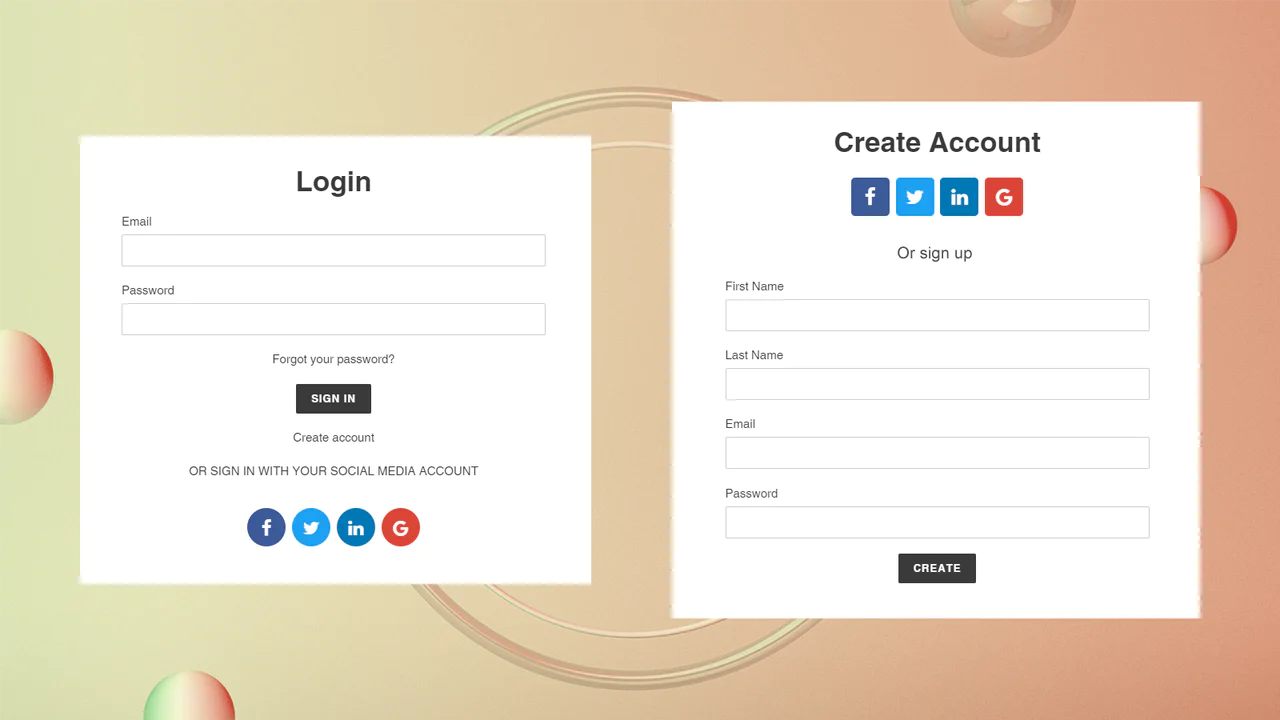
By offering social login, you can also collect valuable data about your customers and their preferences, which you can use to personalize your marketing campaigns and improve your overall customer experience. Plus, it can help you expand your social media reach and engage with your customers on multiple platforms.
To enable social login on your Shopify store, you can use apps available on the Shopify apps store. These apps allow customers to sign in with their Facebook, Twitter, Google, or other social media accounts. They also provide you with analytics and insights on customer behavior and preferences.
Email And SMS Marketing
Implementing Email Marketing Campaigns
Implementing email marketing campaigns is an important strategy for any eCommerce business. By doing it right, you can use email to attract new customers, retain existing ones, and generate a lot of sales.
Starting an email marketing campaign is pretty straightforward and it can be implemented at zero cost. First, you need to create an email list by collecting the email addresses of visitors to your website or customers who have already made a purchase. You can also offer an incentive such as a discount code or free shipping to encourage visitors to sign up for your email list.
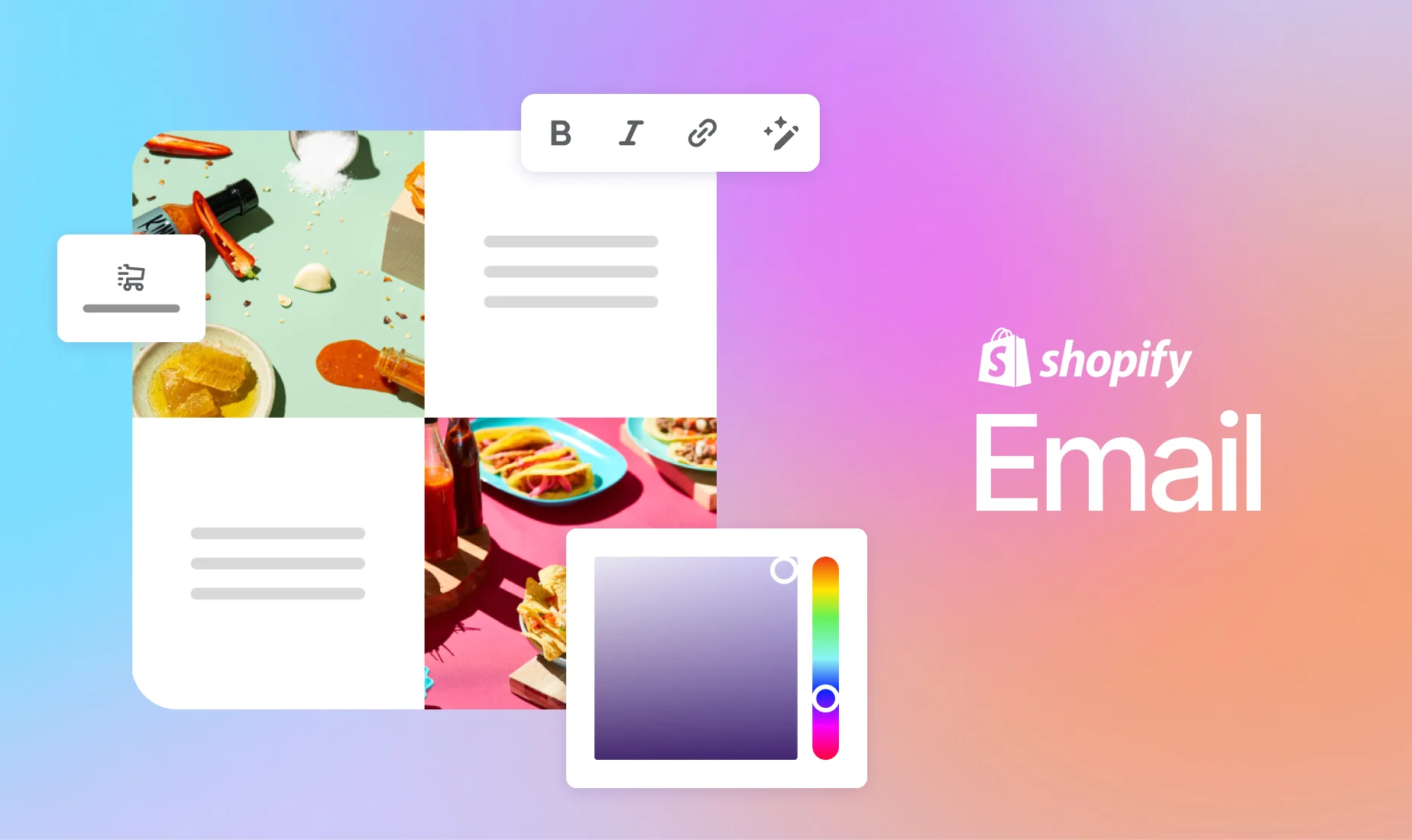
To improve the effectiveness of your email marketing for your Shopify store, consider segmenting your email list into different groups. You can create lists for target customers who haven’t made a purchase yet, and existing customers, and even group them based on location, demographics, and more.
By segmenting your list, you can send personalized messages to each group and promote products or offers that are tailored to their interests. This can result in better engagement and response rates from your email campaigns.
Once you have your email list segmented into several specific categories, you can start sending out targeted email campaigns. One effective strategy, as we mentioned, is to send abandoned cart emails to customers who have left items in their cart without completing their purchase. You can offer them an incentive such as a discount or free shipping to encourage them to complete their purchase.
Another strategy is to send regular email newsletters to your subscribers. These newsletters can include product news, special offers, and any other useful marketing messages. Be sure to personalize your emails and make them visually appealing with images and branding.
Finally, it’s important to track the success of your email campaigns through metrics such as open rates, click-through rates, and conversion rates. Use this data to refine and improve your email marketing strategy over time.
By implementing effective email marketing campaigns, you can build relationships with your customers and drive sales for your eCommerce business.
Send Push Notifications With Promotions
Push notifications are a great way to reach your audience and promote your Shopify store. By sending push notifications, you can deliver fast and effective marketing messages and easily grab your customers’ attention to offer them promotions or discounts.
To make push notifications effective, be sure to make them relevant and timely. For example, send notifications for limited-time sales or when new products are added to your store. Personalize your messages to each customer and make them feel valued.
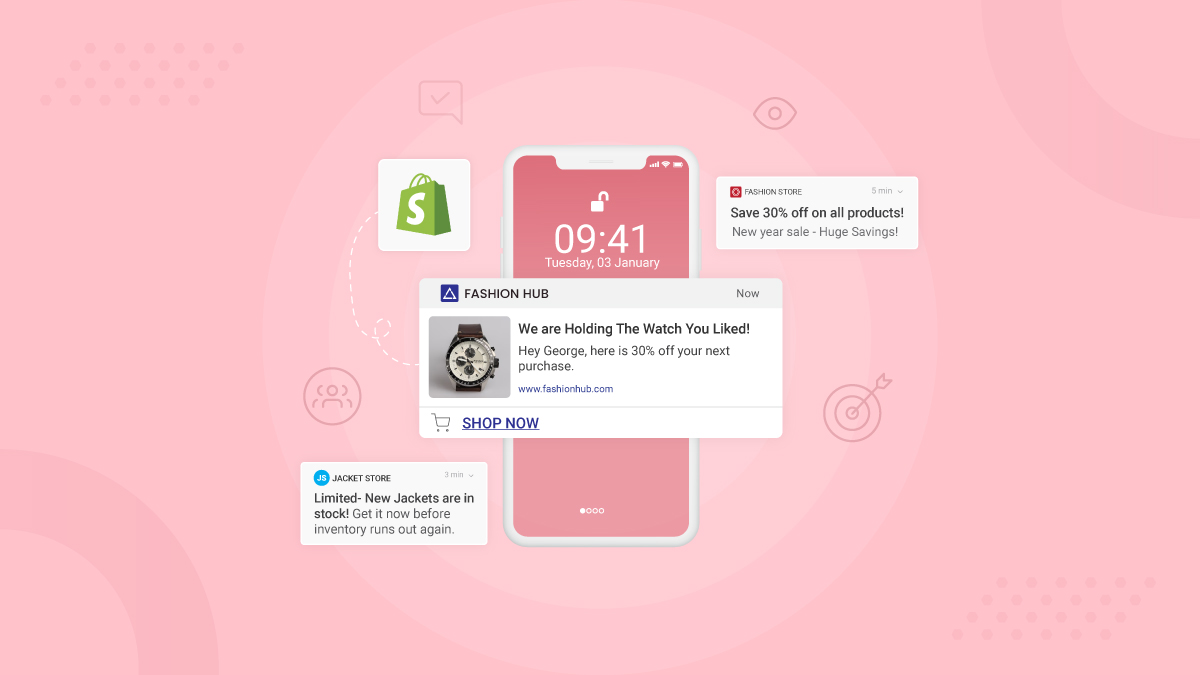
Push notifications are also a great way to remind customers of items left in their cart or to offer exclusive deals to those who have opted in to receive notifications.
Implementing push notifications for Shopify marketing is a straightforward process. You can add a push notification app to your Shopify store and start building your subscriber list by offering discounts or other incentives. Then, you can send push notifications directly to their browser to promote your products or services.
When sending push notifications, keep in mind that too many can be annoying and lead to customers disabling notifications altogether. Be strategic and mindful of your customer’s preferences to ensure that your push notifications are effective in driving sales and engagement.
Share SMS Product Promotions
Despite its effectiveness, SMS marketing remains largely underutilized by Shopify store owners. Surprisingly, 54% of customers actually prefer SMS over email marketing, yet only 11% of businesses utilize SMS marketing campaigns.
SMS messages have an incredibly high open rate, which means that they offer a highly effective channel for your Shopify store marketing strategy. With SMS marketing, you can enjoy more engagement than with email marketing, and establish a direct line of communication with your customers.
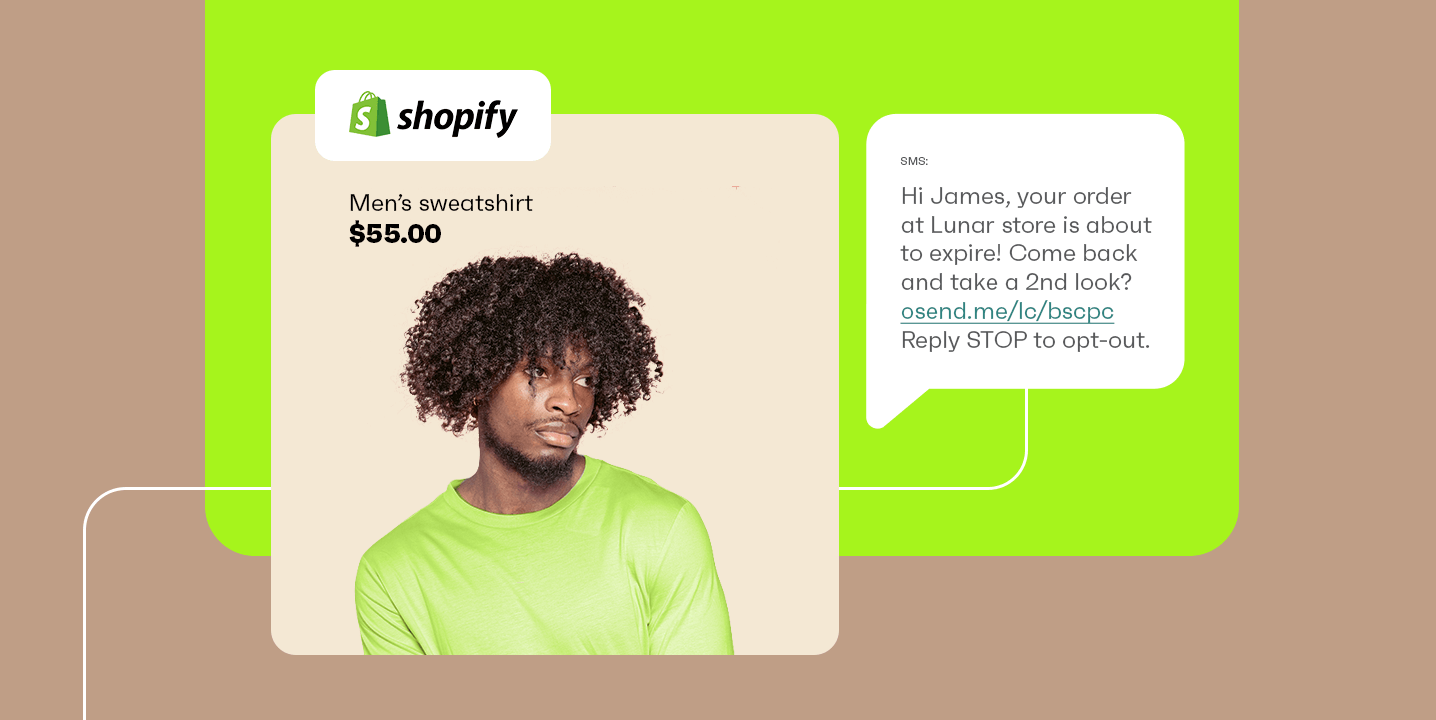
To get started with SMS marketing, you’ll need to collect your customers’ phone numbers and permission to send them messages. You can do this through opt-in forms on your website or during the checkout process.
Once you have your SMS list, you can start creating targeted campaigns based on customer behavior, preferences, and purchase history. For example, you could send a text message with a discount code to customers who haven’t made a purchase in a while or notify them of a flash sale.
By using a suitable Shopify app, sending SMS campaigns can be done within seconds. With these campaigns, you can expect quick open rates and increased engagement. Plus, you won’t have to worry about your SMS messages ending up in the spam folder.
Engagement
Launch A Blog Section
Launching a blog section on your Shopify store is a great way to attract more visitors and improve your search engine ranking. With a blog, you can share helpful tips, industry news, and other interesting content that will keep your audience engaged and informed.
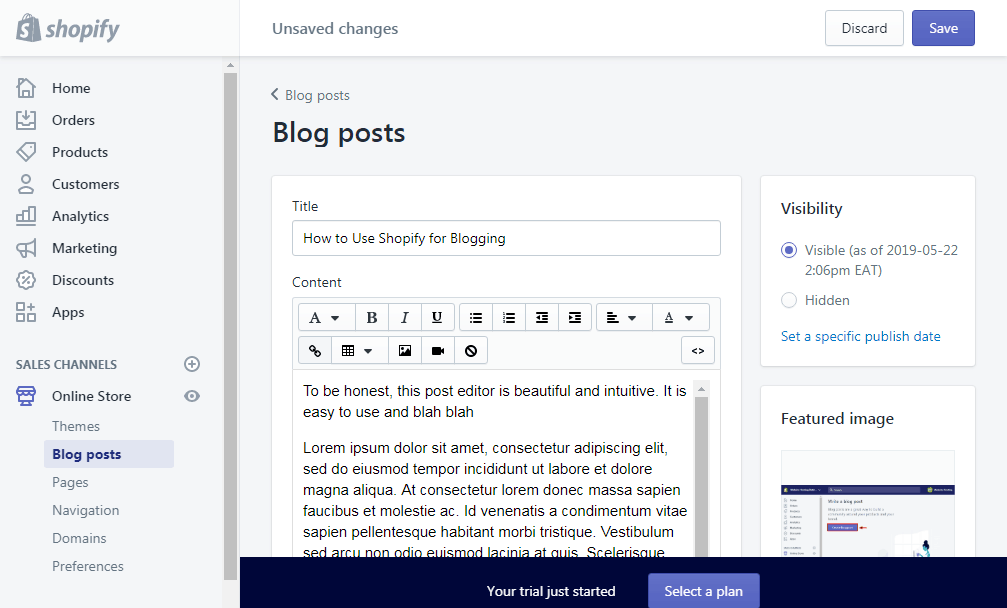
To get started, simply create a new blog in your Shopify admin panel and start writing posts. Make sure to use relevant keywords in your blog post titles and content to help with SEO. You can also add images, videos, and other media to make your posts more engaging.
Promote your blog on social media and other channels to drive traffic back to your store. You can also encourage readers to subscribe to your blog to receive updates whenever you publish new content.
A well-maintained blog can be a powerful tool for building brand awareness, establishing thought leadership, and driving traffic to your store.
Offer Engaging Content To High-intent Subscribers
To keep high-intent subscribers engaged with your Shopify store, it’s essential to offer them engaging content. This can include blog posts, videos, tutorials, and other educational materials that are relevant to your products and niche.
There’s another way to offer high-interactive content to your audiences is by running quizzes and polls is an effective way to engage your audience and convert them into subscribers. Not only does this type of content help customers gain self-awareness, but it also demonstrates that your brand is committed to providing the best experience possible, resulting in a win-win situation.

By providing valuable content, you can establish your brand as a thought leader in your industry and build trust with your subscribers. This can lead to increased sales and customer loyalty over time.
To make the most of your content, it’s important to understand your audience’s interests and preferences. Use data analytics to identify which types of content are most popular with your subscribers and tailor your content strategy accordingly.
Promote Your Products in Blog Articles
Creating blog content that is both helpful and optimized for search engines is a great way to promote your products. Within the blog post, subtly incorporate your products into the content. The key is to address a problem that your product can solve and offer it as a solution in the blog post. This approach is not pushy, but it allows you to promote your products to an interested audience.

For example, if you sell skincare products, you could create blog posts that discuss the benefits of using natural ingredients in skincare routines and then promote your own products that contain those ingredients. This not only provides value to your readers but also helps to drive sales for your business.
This marketing tactic is low-risk and doesn’t require a large budget. By integrating your product promotions into your blog articles in a natural and informative way, you can generate interest and excitement around your products and encourage readers to make a purchase. Plus, blog articles are shareable on social media, which can help to drive even more traffic to your store.
Create Content With Popular Media platforms To Reach More People
To elevate your Shopify marketing, consider utilizing media platforms that are popular among the general public for creating and sharing content. For instance, you can create videos and upload them to YouTube or Vimeo, or create infographics and share them on social media platforms like Facebook, Twitter, and Instagram.

By creating engaging content on popular platforms, you can expand your reach beyond your immediate audience and attract new potential customers. Additionally, using tools like video and infographics can help to convey complex or technical information in a more visually appealing way, making it more accessible to a wider range of people.
Brand Collaborations
You don’t have to view other Shopify businesses as competition. Instead, consider forming strategic partnerships with other brands and collaborating with them to reach a larger audience and increase your sales. Look for brands or influencers in your niche who have a similar target audience and collaborate with them on projects, promotions, or events.

Collaborations can take many forms, such as guest blog posts, social media campaigns, giveaways, or product bundles. By working together, both brands can benefit from increased exposure and potential sales.
For instance, if you are selling activewear, you could collaborate with a fitness or wellness brand such as a supplement business or a yoga mat store. Together, you can create a product bundle that appeals to both of your audiences. By promoting the bundle to each other’s audience, you can create a win-win situation and significantly increase your reach.
Promotion and Advertising
Launch Promotions And Discounts
Research indicates that even a small discount can have a significant impact on a customer’s decision to purchase a product. A survey conducted by RetailMeNot in 2018 found that 66% of consumers have made unplanned purchases because they found a discount or coupon. Moreover, the same study showed that 80% of consumers are more likely to make their first purchase with a new brand if they discover an offer or promotion.

Offering promotions and discounts can be an effective tactic to increase sales and customer loyalty for your Shopify store. Here are some strategies you can use:
- Cart abandonment discounts: If a customer adds items to their cart but doesn’t complete the purchase, send them an email or push notification with a discount code to incentivize them to come back and complete the purchase.
- First-time customer discounts: Offer a discount code to new customers to encourage them to make their first purchase from your store.
- Seasonal promotions: Create promotions around holidays, seasonal events, or even your store’s anniversary to encourage customers to make a purchase.
- Bundle deals: Offer discounts on bundles of products to encourage customers to buy multiple items from your store.
- Referral discounts: Offer discounts to customers who refer their friends or family to your store, which can help you to acquire new customers.
Promotions and discounts are a great way to create urgency and encourage customers to take action. Be sure to promote these offers through email, social media, and other marketing channels to maximize their impact.
Run Advertising Campaigns On Google And Social Media
Relying solely on free website traffic may not be enough to generate significant sales for your Shopify store. Fortunately, there are effective paid advertising campaigns available that can help you reach a larger audience and achieve a great return on investment (ROI).
Paid advertising is often one of the first marketing strategies for Shopify store use as it can quickly put your products in front of a large number of potential customers. Google and Facebook are the best platforms to start running advertising campaigns. By spending as little as $5/day on ads, you can generate decent sales and attract quick traffic to your store.
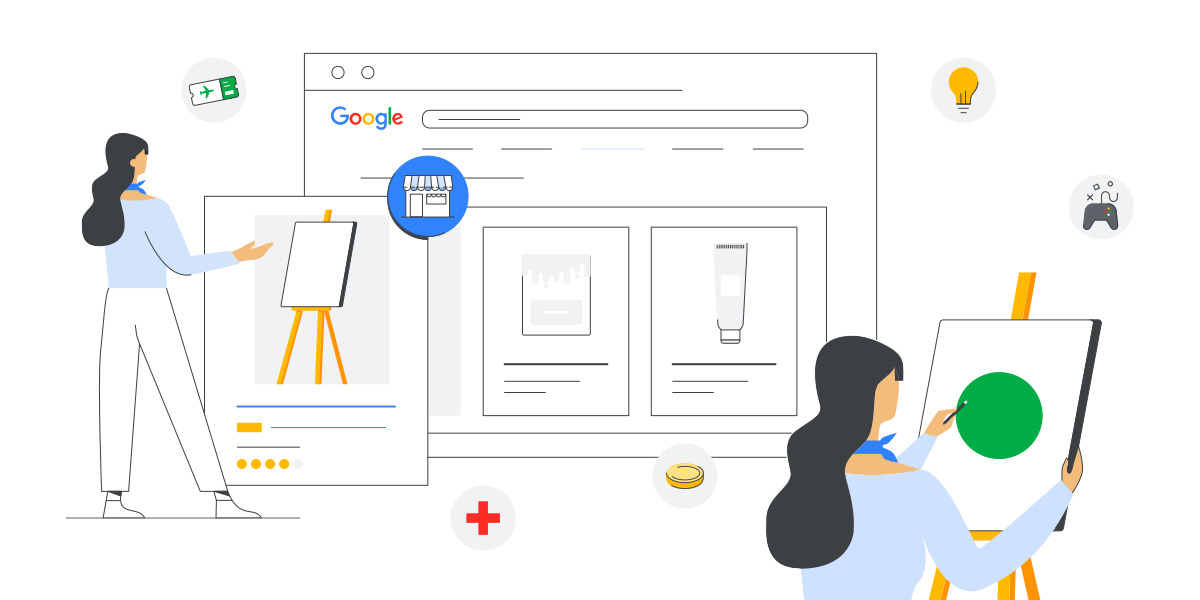
Shopify stores can benefit from some of the most effective paid advertising strategies, such as Google retargeting ads that display to people who have previously visited your store and shown interest in your products. Google shopping ads can be used to target customers who frequently research products online. Facebook ads are perfect for impulse purchases, especially for low-cost items. However, paid advertising comes with a cost. If not managed correctly, you may end up spending more on ads than the revenue generated.
Retention
Create An Outstanding And Inclusive Loyalty Program
Creating a flexible and inclusive loyalty program is an effective Shopify store marketing strategy that can help increase customer retention and encourage repeat purchases.
To make your loyalty program flexible, consider offering various rewards and perks that customers can choose from based on their preferences. For example, you can offer discounts, free products, exclusive access to new releases or events, earnings of reward points after each sale, and many more.
To make your loyalty program inclusive, make sure that it’s accessible to all customers regardless of their spending levels or purchase history. Consider offering tiered rewards that allow customers to earn points or rewards based on their activity and engagement with your brand.

Additionally, make sure that your loyalty program is easy to understand and use. Provide clear instructions on how customers can earn and redeem rewards, and make sure that the program is easy to access and navigate through your website or mobile app.
By creating a flexible and inclusive loyalty program, you can not only increase customer loyalty and repeat purchases but also attract new customers who are interested in joining a program that values their needs and preferences.
Established A Referral Program On Your Shopify Store
A referral program is a powerful Shopify store marketing strategy as it can create word-of-mouth buzz and spread brand awareness on a large scale.

Here’s how it works: you offer your existing customers an incentive, such as a discount or reward, for referring their friends and family to your store. When someone they refer makes a purchase, both the referrer and the new customer receive the reward.
This not only incentivizes your existing customers to bring in new business, but it also helps build brand loyalty and trust. Plus, referred customers are often more likely to make a purchase and become long-term customers themselves.
To ensure that your referral program is successful, it is crucial to provide an incentive for people to refer your business. For Shopify stores, offering a discount is a popular strategy, but you can also consider other incentives such as free shipping, exclusive perks, or even referral giveaways.
Feature User-Generated Content In Your Store
Were you aware that nearly 80% of consumers claim that user-generated content (UGC) significantly influences their buying decisions? In comparison, only 13% of consumers find brand-created content to be significant, according to research.
Featuring UGC in your online store is a great way to build a community and create social proof for your products. UGC refers to any content that is created by your customers, such as reviews, photos, videos, or social media posts.

By featuring UGC on your website, you can showcase real-life experiences with your products, which can help to increase trust and credibility among potential customers. It also provides an opportunity for your customers to engage with your brand and feel a sense of belonging to your community.
You can feature UGC on your product pages, social media channels, or even in your email marketing campaigns. Encourage your customers to share their experiences with your products by offering incentives or running contests. UGC is a powerful tool for building brand loyalty and driving sales.
In Conclusion,
Implementing effective marketing strategies is essential for the success of any Shopify store. By using various tactics such as social media marketing, email marketing, running advertising campaigns, creating a referral program, and featuring user-generated content, you can increase your brand awareness, generate more leads, and drive sales. Remember that every business has unique needs and requires a personalized marketing plan. Understanding your customers’ habits and preferences is crucial. It’s recommended to use a mix of these strategies, but it’s important not to overload yourself with too many at once. It’s better to master a few strategies than to attempt them all at once without seeing results.
If you need assistance with your Shopify store marketing strategy but lack the time, Magenest offers a comprehensive solution. With our elite Shopify development services, you’ll have access to a complete range of Shopify development tools and dedicated specialists to create and manage your online businesses for you.




